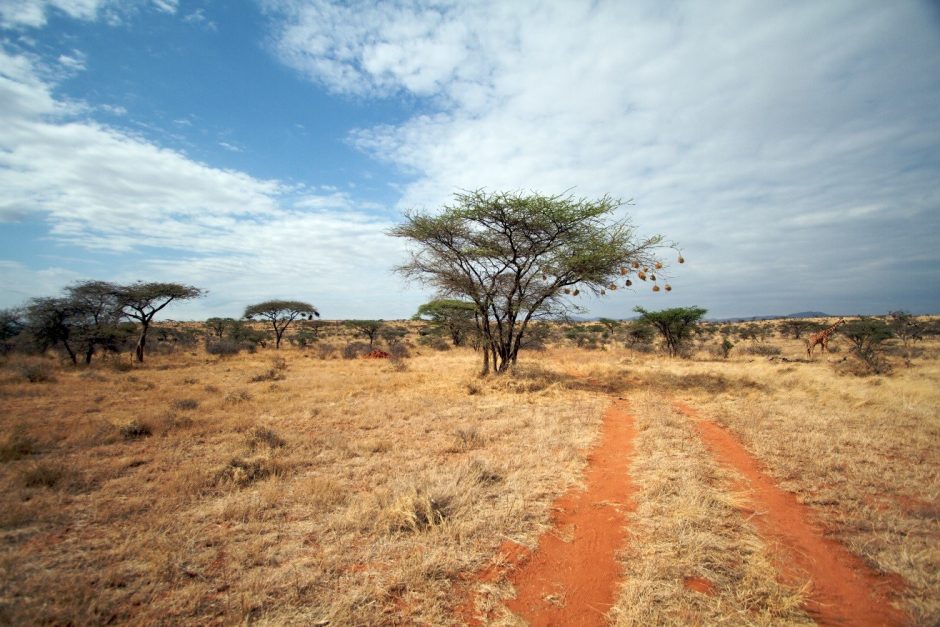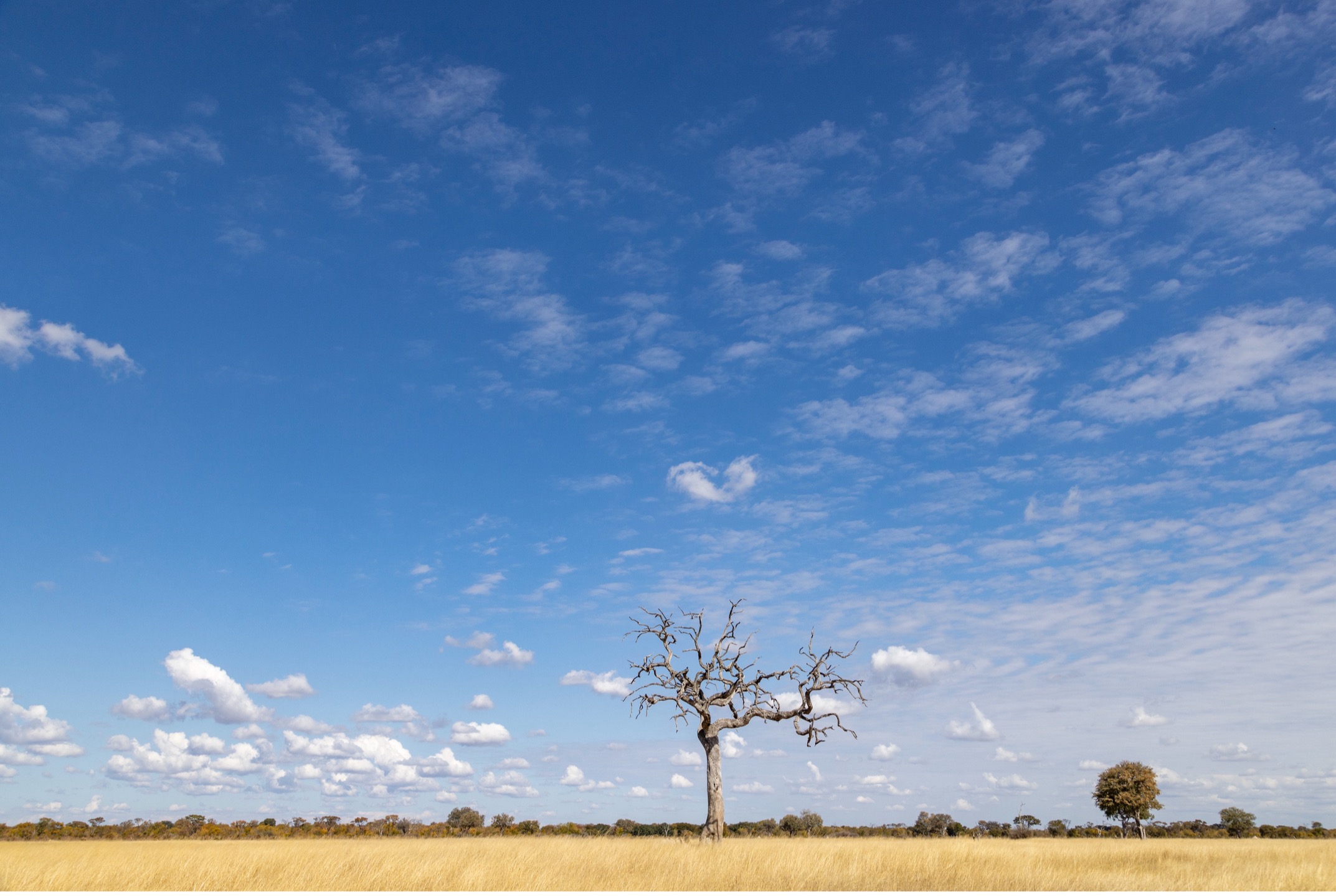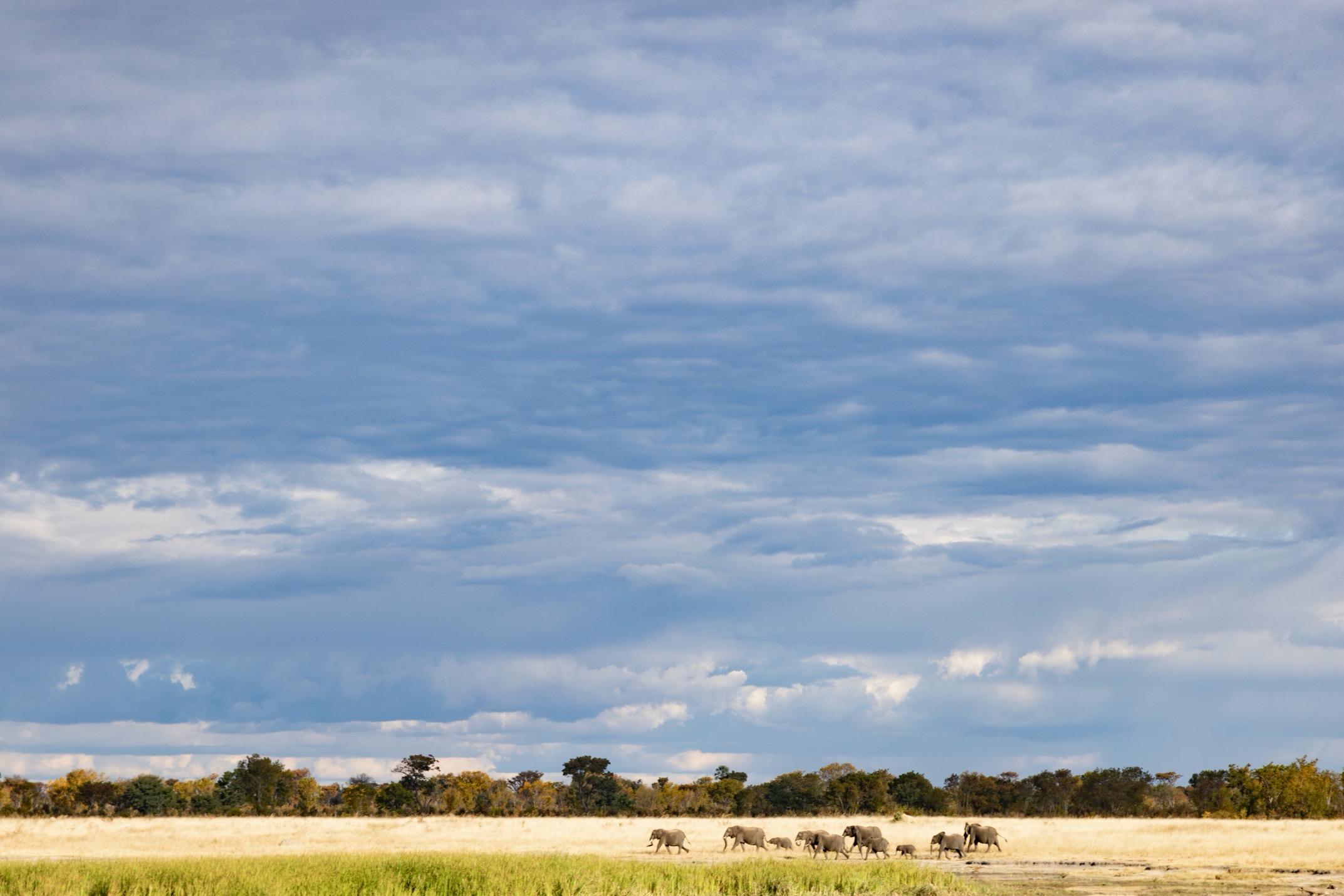
Tips for Captivating Landscape Photography in Africa
The big open spaces of Africa aren’t prime for only wildlife photography. Landscape photography in Africa is just as big, bodacious, and spectacular. If you’re headed on a safari in Africa, pack these tips along with you to ensure you get some unique, captivating, and stunning photos of Africa’s grand landscapes!
Embrace Minimalism
One of my favorite ways to photograph the vast openness of the African wilderness is to showcase the endless expanse–this goes for the land as well as the African sky. And one of my favorite ways to portray this expansive vastness is to create space in my photos. We are often tempted to add layer after layer, component after component in our landscape photography. Yes, having a mountain range encircled by wildflowers with a gentle babbling brook meandering around boulders and woodlands is picturesque, but sometimes less is more.
For starters, Africa certainly has multifaceted scenes like described above, where rock outcroppings jut out beyond waterfalls with ominous woodlands creating spectacular layers. But you know what it has a lot more of? Big, open skies as far as the eye can see. You are sure to be enveloped by these (and likely entranced by them, too!), so deliberately trying to keep the scene simple yet captivating is a great way to go.
See a lone tree in the distance with an endlessly flowing blue sky? That’s minimalism, that’s beautiful, and that’s Africa.

While the golden grasses of the savanna are also an attractive feature, I deliberately chose to keep them minimal to add a bit of color, context, and grounding in the shot. Instead, I wanted to showcase the openness…no buildings, no mountains, just depth.
Minimalism and simplicity also plays a part in the colors you seek to include in your photos of Africa. I find myself often silhouetting photos at sunrise and sunset times of day.

In the above photo, I noticed a subtle haze as the sun set with two acacia trees in the distance. I put on my 400mm telephoto and used zoom compression to make the trees ‘normal size’ even though they were barely visible on the horizon. This increased the size of the sun and filled the frame with this minimal, subtle color.
Minimalism can come in many varieties and is definitely something to have in your bag of tricks!
Start with the Rule of Thirds…
You can’t have a talk on landscape photography without talking about this age-old rule. It’s a rule for a reason, in that it can be a game-changer for the aesthetics of your photos. You’ve probably heard of this, and the tenets are simple. Place key objects in your landscapes at the intersecting points instead of dead middle, and break the scene down into thirds instead of halves or quarters.

Notice how in the above African sunset (yes, I do love sunsets in Africa!) the horizon is not in the middle of the frame. However, as you observe the same photo with the rule of thirds grid on top, it doesn’t necessarily fit perfectly to the rule. The horizon is a bit below and the tree on the right isn’t smack dab over the intersecting point. Instead, the photo is balanced using the rule of thirds.

In other words, the rule of thirds is a great starting point–an outline–but consider how it helps to balance your scene. Sometimes, you will start with the rule of thirds…
…And then Break the Rule of Thirds
Sometimes you may be in front of a scene and realize that creating a captivating image goes against the rule of thirds. To find balance, or to simply put emphasis where you want, you must break the rule of thirds. This is okay! Rules are meant to be broken.

In the above photo, the leading lines of safari tracks, combined with the nice sky, with good foreground elements of the weaver-nest-filled acacia tree, means that it looks best with the horizon right down the middle of the photo. We photo guides general advise against placing horizons in the middle, but there are indeed times that the rule of thirds should be broken, and this is where the vision and artistry comes in–knowing when to abide and when to throw the rules out.

A rule-breaking technique that I often come back to is the idea of exaggerated composition. In the above photo, I opted to place a herd of massive animals, African elephants, deliberately small and low in the scene. This allows me to once again showcase the size and grandeur of the sky in a creative way. I find that this exaggerated composition lends itself well to playing with the size ratio of animals to the scene and segues to my third and final tip in this article, which is to place wildlife in the scene for added umph in your Africa landscape photography.
Place Wildlife in Scene for Added Umph
When taking photographs in Africa, we are often drawn to the wildlife portraiture style of photography. We can often get reasonably close to animals, so why not put them as big as possible in the scene to show their glory? Well, yes, that’s a great technique, but I often need to remind myself to zoom out and create a landscape photo out of an otherwise obvious close-up wildlife photo.

This is where Africa really shines. With the abundance of wildlife and the abundance of novel, captivating landscapes, combining the two makes something greater than the sum of the parts. The approach is simple, but relies entirely on resisting the urge to zoom for what would be a classic wildlife photo. The technique centers on the realization that when you are in front of a great wildlife sighting, be sure to pause and really look at the surroundings and see if the environment itself would make for a good stand-alone landscape photo, and shooting wide instead of tight.
In Summary
We are so fortunate when photographing in Africa that we have stunning wildlife and also stunning landscapes.
While there are many ways to take extraordinary photos of these landscapes, narrowing your field down and thinking of creating a minimal look to your photos can be an excellent, artistic approach. And when thinking of the setup for the shot, it always pays to start with the rule of thirds, but not be bound by them. Finally, when you have both captivating wildlife and a great landscape together, it’s key to realize it and prioritize your photos for those landscape shots to really round out your trip album and captivate your audience with the grandeur of the entire scene.
If you’re headed to Africa on a photo safari, I congratulate you and wish you the absolute best!
Cheers,

Court
Leave a reply